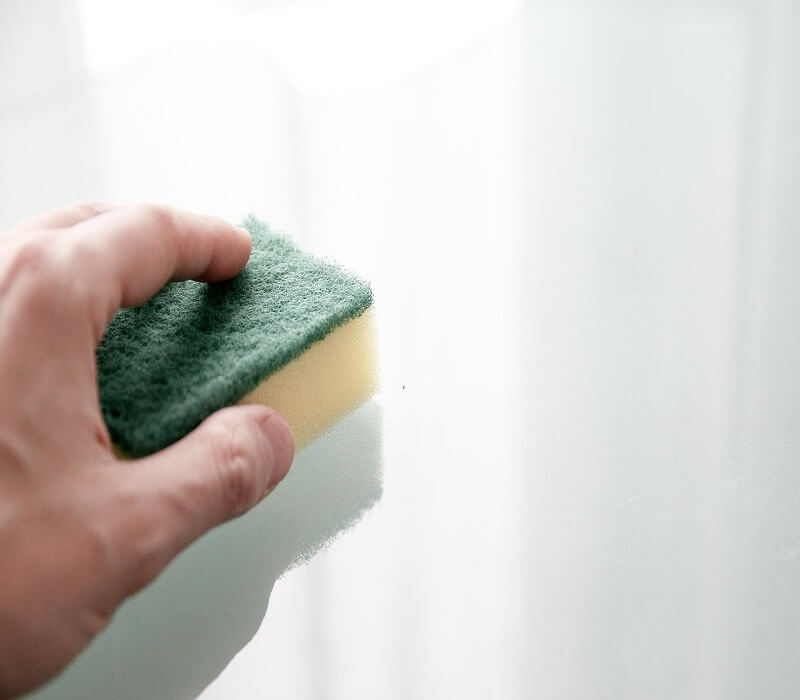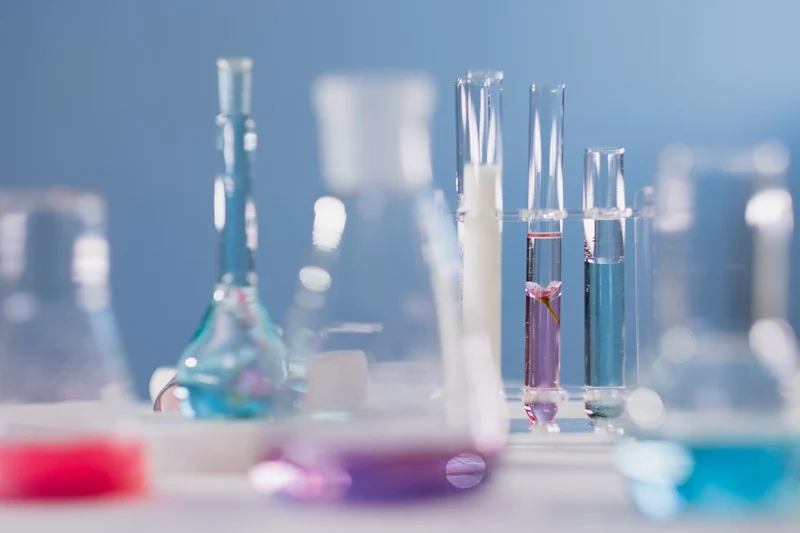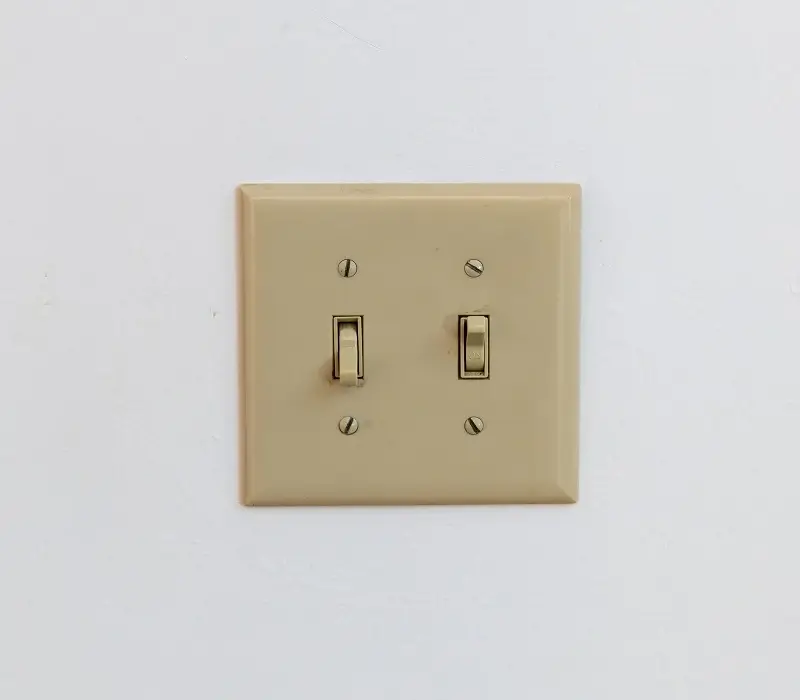
Mineral spirits is a great cleaner used as a paint thinner, degreaser, stain remover, and much more. This product is renowned for evaporating completely on its own, leaving no trace behind. In rare instances, though, it may leave a residue that needs its own cleaning method. So, how to address it? Now I want to tell you how to remove mineral spirits residue.
The good news is that you don’t need any fancy cleaner to remove mineral spirits residue. You can actually achieve great results with just water and dish soap. But, if that does not work, it’s still too early to give up because we’ve got some extra tips that will certainly help you remove mineral spirits residue.
Table of Contents
Do Mineral Spirits Evaporate Completely?
Mineral spirits, also known as white spirits or mineral turpentine, are commonly used as a solvent for various purposes such as cleaning, degreasing, thinning paint, and removing adhesives. When it comes to their evaporation, mineral spirits do evaporate, but the rate and completeness of evaporation can depend on several factors:
- Volatility: Mineral spirits have varying degrees of volatility, which refers to how easily a substance evaporates. Different formulations of mineral spirits may have different evaporation rates.
- Environmental Conditions: The rate of evaporation can be influenced by environmental factors such as temperature, humidity, and air circulation. Higher temperatures and lower humidity tend to promote faster evaporation.
- Surface Area: The surface area exposed to air affects the speed of evaporation. If mineral spirits are spread out over a larger surface area, such as during cleaning or if left in an open container, they will evaporate more quickly.
- Ventilation: Adequate ventilation can help facilitate the evaporation process by allowing the evaporated fumes to dissipate. Good airflow helps prevent the accumulation of fumes in an enclosed space.
- Quantity Applied: The quantity of mineral spirits applied or used can affect the time it takes for complete evaporation. Larger volumes or thicker layers may take longer to evaporate fully.
It’s important to note that even though mineral spirits evaporate, they may leave behind some residue depending on the specific formulation and the contaminants they have dissolved or removed. It’s always a good practice to follow the manufacturer’s instructions and guidelines regarding the use, handling, and disposal of mineral spirits.
Additionally, it’s crucial to handle mineral spirits with care, as they are flammable and should be used in well-ventilated areas away from open flames or sparks. Proper safety precautions, such as wearing protective gloves and avoiding inhalation of fumes, should be taken when working with mineral spirits.

How Long Does It Take for Mineral Spirits to Evaporate?
The time it takes for mineral spirits to completely evaporate can vary depending on several factors, including:
- Volatility: The specific formulation and composition of the mineral spirits can affect their volatility and, consequently, the rate of evaporation. Different brands or types of mineral spirits may have varying evaporation rates.
- Environmental Conditions: Factors such as temperature, humidity, and air circulation play a role in the evaporation process. Higher temperatures and lower humidity generally promote faster evaporation. If the environment is well-ventilated, it can also aid in the evaporation process.
- Surface Area and Thickness: The surface area and thickness of the mineral spirits can influence the evaporation time. Thicker layers or larger volumes of mineral spirits will take longer to evaporate compared to smaller amounts or thinner layers.
- Ventilation: Adequate ventilation is important for the evaporation of mineral spirits. Good airflow helps carry away the evaporated fumes, facilitating the evaporation process. If the area is poorly ventilated, it may take longer for the mineral spirits to evaporate.
Considering these factors, the evaporation time for mineral spirits can range from a few minutes to several hours. In some cases, it may take even longer for larger volumes or thicker layers of mineral spirits to completely evaporate.
To ensure safe handling and disposal, it is recommended to follow the manufacturer’s instructions and guidelines regarding the use, ventilation, and drying time of mineral spirits. Always use mineral spirits in well-ventilated areas and take appropriate safety precautions to avoid exposure to fumes or ignition sources.
Do Odorless Mineral Spirits Leave a Residue?
Odorless mineral spirits, also known as OMS or low odor mineral spirits, are a type of mineral spirits that have been specially processed to remove or reduce the strong odor associated with traditional mineral spirits. These OMS products are often preferred for indoor use or in situations where odor sensitivity is a concern.
In general, odorless mineral spirits have a low residue level compared to other solvents, but it is possible for some residue to remain after evaporation. The amount of residue left behind can depend on various factors, including the specific formulation of the OMS product and the contaminants it has dissolved or removed.
To minimize the likelihood of residue, it is important to use OMS properly and follow the manufacturer’s instructions. Here are some tips to consider:
- Use Clean Tools: Ensure that the tools or surfaces you are cleaning or applying the OMS to are clean and free of debris. Using dirty tools or surfaces can introduce additional contaminants that may contribute to residue.
- Adequate Application: Apply OMS sparingly and use only the amount necessary for the intended purpose. Excessive application can result in a higher likelihood of residue.
- Proper Drying Time: Allow sufficient time for the OMS to evaporate completely. This duration can vary depending on factors such as temperature, ventilation, and the quantity of OMS used. Be patient and let the OMS evaporate thoroughly before handling the cleaned object or applying other materials.
- Clean Surfaces: After using OMS, it is advisable to wipe or clean the surfaces with a clean cloth or paper towel to remove any remaining residue.
- Follow Safety Guidelines: Always follow safety guidelines, including using OMS in well-ventilated areas and taking appropriate precautions to avoid skin contact and inhalation of fumes.
While odorless mineral spirits tend to leave less residue compared to other solvents, it is important to remember that any residual traces may still exist. If residue-free cleaning is crucial for your application, it may be beneficial to explore alternative cleaning methods or solvents specifically designed for residue-free cleaning, depending on the specific requirements of your project.

The Products You’ll Need to Remove Mineral Spirits Residue
Disp Soap
The first approach won’t involve any unusual combinations or harsh products. Just dish soap and water.
Apply a few drops of dish soap to a damp rag and wipe out the area. Then rinse again with clean water to remove any remaining residue.
Rubbing Alcohol
Soak a paper towel in rubbing alcohol and place it over the affected area. Wait a few minutes before removing it and rinsing the surface. For small surfaces, though, a cotton ball will suffice.
What’s great about rubbing alcohol is that it leaves no residue behind (I really mean it). It’s also safe to use on almost all surfaces. If you want to learn more about this product, Webmd has an excellent article about all the uses of rubbing alcohol.
Acetone Nail Polish Remover
This product will likely be harsh and possibly hazardous to some surfaces. As a result, you need to do your homework to make sure the surface you want to clean won’t show any adverse reaction.
For further peace of mind, we recommend testing acetone on an inconspicuous part of the surface.
If the product turns out to be safe to use, apply some of it to a cotton ball and dab mineral spirits residue. Then rinse the surface and repeat if necessary.
Please keep in mind that, regardless of the surface you’re attempting to clean, leaving nail polish remover for an extended period of time will result in more harm than good. Therefore, you should act quickly.

How to Remove Mineral Spirits Residue. Frequently Asked Questions
Is mineral spirits toxic?
Despite being less toxic than other paint thinners, mineral spirits is nevertheless a toxic product that should be used with care. If you use it inside, you should ensure enough ventilation. You should also avoid breathing mineral spirits as it can cause some severe health issues.
Do Mineral Spirits irritate the skin?
Yes, it does. The severity of irritation will depend on prolonged exposure to this substance. That is why we strongly advise you to use rubber gloves.
Can you clean the floor using Mineral Spirits?
Even though mineral spirits is safe for use on most hard surfaces, we recommend testing a small section of your floor first.
Can you clean paint stains with Mineral Spirits?
Yes, you can. We have actually published a recent guide that covers plenty of approaches to cleaning spray paint off a tile floor.
And guess what? Mineral spirits was among the best products that have provided amazing results within a short period of time.
Conclusion
You’ve undoubtedly noticed that this guide wasn’t very lengthy, and it didn’t feature a lot of products. The truth is that mineral spirits residues are neither difficult nor expensive to remove. All it needs are a few items that you most likely already have at home to get the job done.
The only thing that you should remember when using mineral spirits for cleaning is to use small quantities only. You should also rinse the treated surface after each application of this product.
How do you clean up after using mineral spirits?
After using mineral spirits, you should dispose of any used rags, paper towels, or other materials in a metal container with a tight-fitting lid to prevent fires from spontaneous combustion. Then, you should wash your hands and any tools or surfaces that came into contact with the mineral spirits using soap and water.
Does mineral spirits leave behind residue?
Mineral spirits can leave behind a residue if it is not wiped off properly after use. The residue may be oily and can attract dirt and dust if left on surfaces. It is important to clean up mineral spirits thoroughly after use and wipe down any surfaces with a clean cloth to ensure that no residue is left behind.
Does mineral spirits leave a oily residue?
Yes, mineral spirits can leave an oily residue if it is not wiped off properly after use. The residue may be oily and can attract dirt and dust if left on surfaces. It is important to clean up mineral spirits thoroughly after use and wipe down any surfaces with a clean cloth to ensure that no residue is left behind.
Will mineral spirits completely evaporate?
Yes, mineral spirits will completely evaporate when exposed to air. However, the evaporation rate may vary depending on factors such as temperature, humidity, and ventilation. It is important to allow adequate time for the mineral spirits to evaporate before storing or using any materials in the area again to avoid any potential safety hazards.
What do you do with a paint brush after cleaning it with mineral spirits?
After cleaning a paint brush with mineral spirits, you should wipe it down with a clean cloth to remove any excess solvent. Then, you can rinse the brush with soap and water to remove any remaining paint or solvent.
We're an affiliate
We hope you love the products we recommend! Just so you know, CleanyHome.com is a participant in the Amazon Services LLC Associates Program, an affiliate advertising program designed to provide a means for sites to earn advertising fees by linking to Amazon.com.

![How to Get Rid of Spiders in the Basement [9 Effective Tips]](https://supercleanworldall.com/wp-content/uploads/2021/07/depositphotos_125531742-stock-illustration-the-pattern-with-spiders.jpg)
